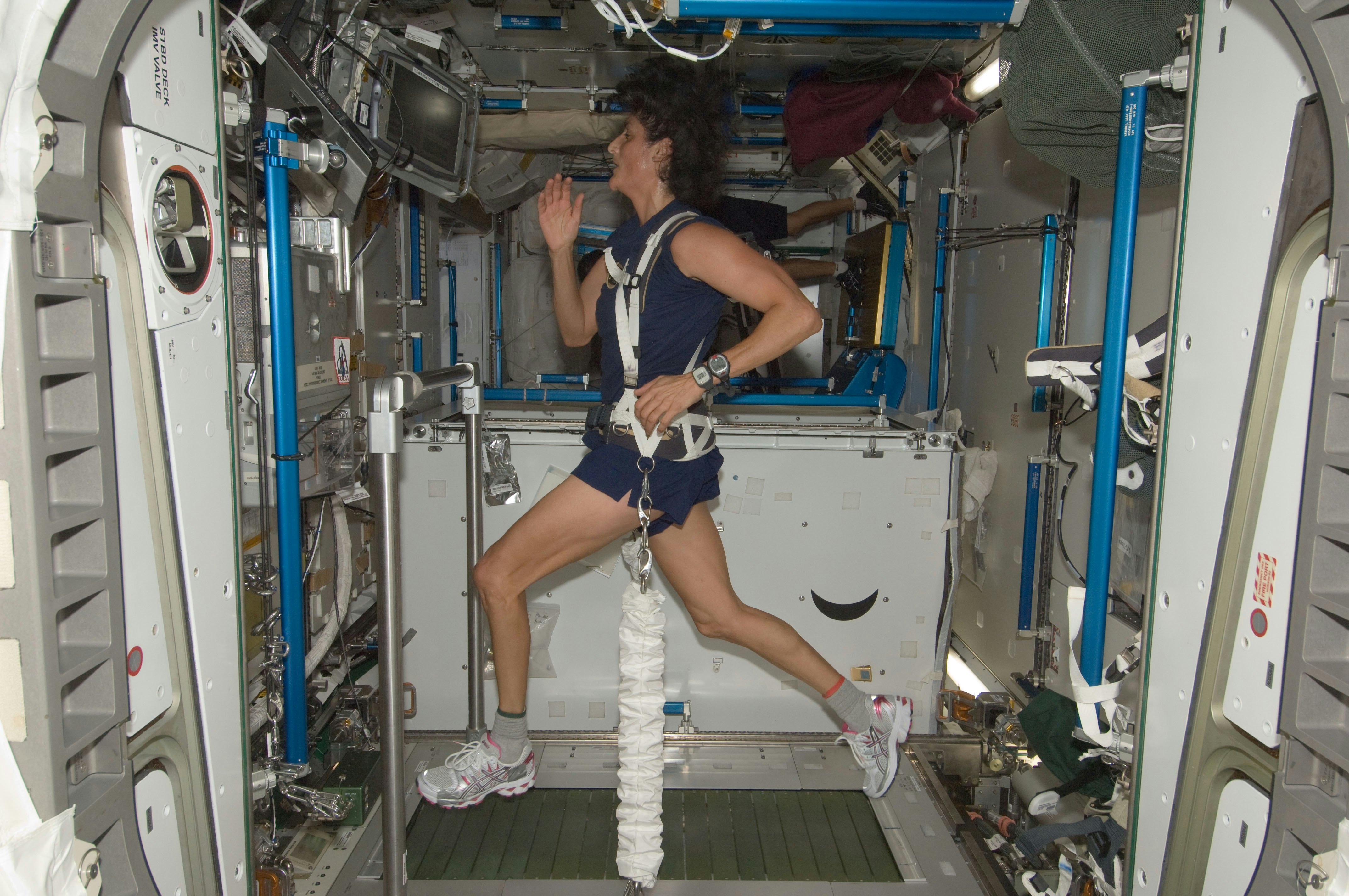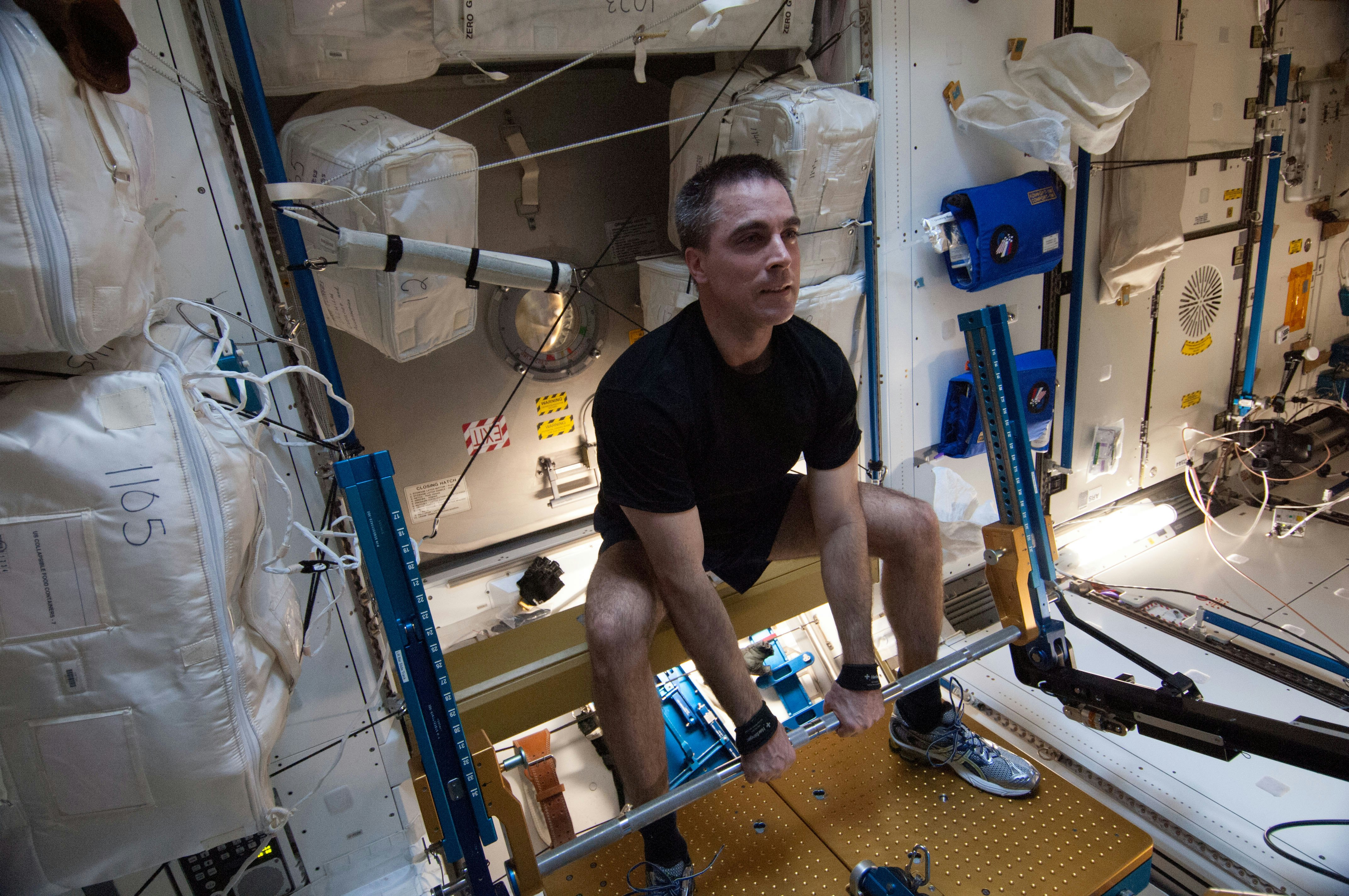
The idea of staying fit may seem like the last thing to worry about while floating more than 1.2 million feet above Earth, but it's exactly the opposite. Exercising is vital for astronauts who spend long periods of time in space. And for Butch Wilmore and Suni Williams, whose eight-day Starliner Crew Flight Test mission ballooned into a nine-month stay at humanity’s farthest outpost, their fitness regime has taken a drastic turn.
With a week-long stay in mind, Wilmore and Williams were working out recreationally in space. But after their mission hit the three-week mark, they began an official fitness program prescribed by NASA doctors. Now that they won’t leave space until February 2025 at the earliest, that workout routine is even more important. Currently, they work out six times a week, for two and a half hours each session. They’ll likely continue this regimen until they come home, Stevan Gilmore, lead flight surgeon and deputy manager of space and occupational medicine at NASA, tells Inverse.
The sessions are a mix between three main pieces of equipment. There’s the Advanced Resistive Exercise Device (ARED) machine, a specialized treadmill called T2, and a specialized stationary bike called the Flight Ergometer (Fergo). It’s not just one exercise that is effective, according to Gilmore. Rather, it’s a combination of the three. “It’s the total volume of work that helps keep the body close, in terms of its capacity, to what it was before it left the planet,” Gilmore says.
Here’s an inside look at how the astronauts are keeping fit in space.
The world’s most specialized strength machine: The Advanced Resistive Exercise Device (ARED)
On Earth, exercises like running and resistance training are made harder by gravity, which weighs the body down. That’s where NASA’s specialized exercise equipment comes in. One such instrument is the ARED machine, which enables astronauts to perform movements like squats, deadlifts, curls, and pull downs in a microgravity state (where gravity’s pull is not zero, but still incredibly small). The machine has a series of adjustable resistance technology that allows astronauts to experience load which is usually brought on by gravity. This allows them to maintain strength and muscle mass while enduring long periods in microgravity.

No matter their own personal preferences, certain exercises are key. “I think the hardest muscle groups probably aren't what you might typically guess,” Gilmore says. It’s the hands, including the upper arm, the arms, and the forearms. When astronauts are scheduled for spacewalks, they prepare to spend hours floating outside the ISS doing repair work.
The suit wants to be in a steady state, Gilmore says. “If you stuff your arm or hand in, let's say a big ball of rice or something that you have to work to actually just do the regular movements against that, that's where some of that fatigue comes from,” Gilmore says. That’s what makes it more of a challenge for the hands.
“In flight, a lot of this strengthening for grip and forearms is done by virtue of the normal workouts they do on the [ARED].” says Gilmore.
Beyond the hands, astronauts have a lot more to work on. The body in space has a natural tendency to adapt to not having gravity, Gilmore says. That includes the “anti-gravity” muscles. Found in the back, the hips, lower back, and legs, these do the most work when you try to get out of bed, or sit, or stand up, he says. Exercises that mimic squats and deadlifts are best for these.

A treadmill built for space
In space, you can’t sit down, stand up, or walk around. This takes a toll on the bipedal body. At the same time, astronauts need aerobic levels of fitness to complete the duration of the spacewalk, which can last hours at a time. That’s where the T2 treadmill and the flight ergometer comes in. On each machine, a harness pulls astronauts down when they work out and they can vary the amount of load they put on that, Gilmore says.

By replicating the equivalent downward force of their body weight on Earth, astronaut bodies get the impact of walking on their muscles and bones. This is critical. It stimulates the muscles and nerves to remember how to walk. The body doesn’t completely forget how to walk on two legs while in space, but these exercises make the transition back home much smoother.
As an electric motor powers the treadmill, astronauts change the time profiles and set their workouts to different intensities. “This mode provides the best in terms of generating heal strike forces,” Gilmore says. When the electric motor is off, astronauts get a more intense workout as they must push the belt on their own.
Astronaut bodies are at the edge. Eons of human evolution on a gravity-laden planet Earth meets head-on with the microgravity of the final frontier, exercise offers the best remedy against this epic clash.







